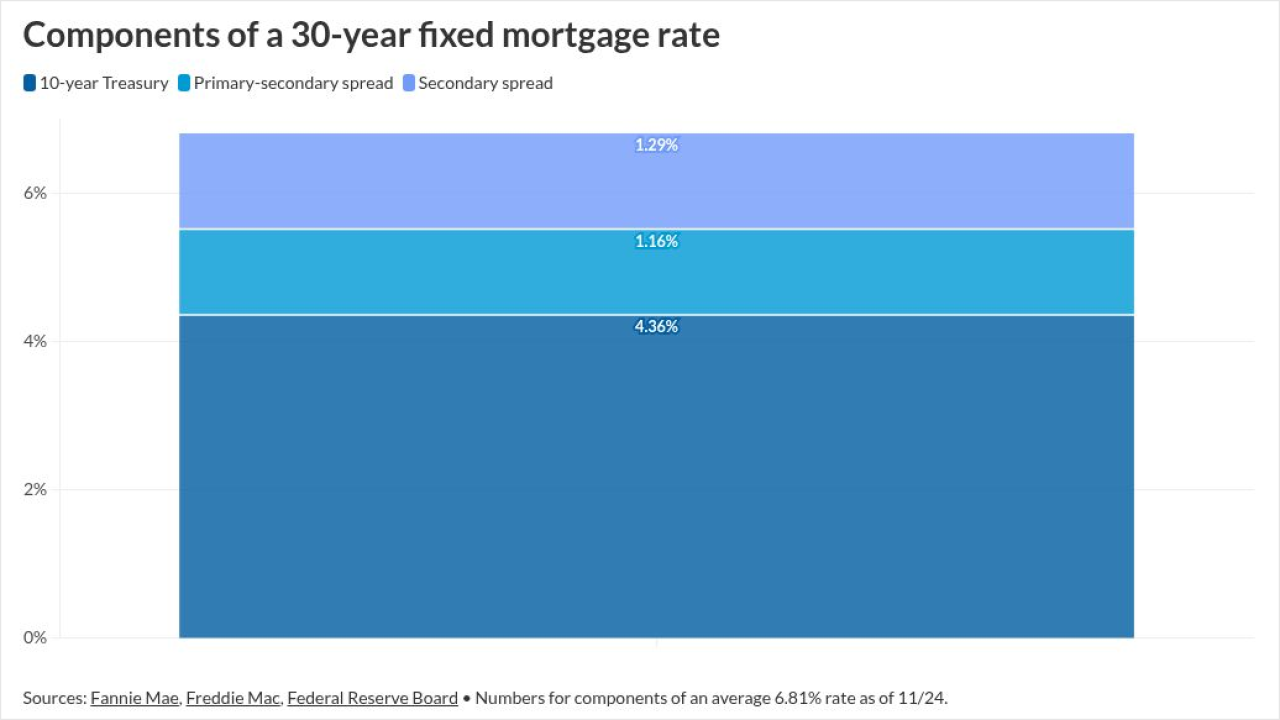Angel Oak Capital is joining the ranks of private-equity firms helping regional and community banks tap the securitization market to address their capital needs.
While many banks need to raise capital for regulatory purposes, the market for their debt is limited. The market for bonds backed by the subordinated debt issued by a number of small banks is larger, potentially much larger — and could lower their cost of capital. These deals limit exposure to any single institution, and they are structured so that the senior notes issued are less risky than the underlying debt.
“If you look at how [community] banks capitalize themselves today, they’re largely capitalized through equity, far more equity in their capital structure than larger banks,” said Navid Abghari, a senior portfolio manager at Angel Oak who leads the effort. “That’s not necessarily the most efficient capital structure for them.”
In January, Angel Oak affiliate Buckhead One Financial Opportunities privately placed $155.2 million of bonds backed by the subordinated debt of 25 small and midsize banks whose assets range from $200 million to $10 billion. Nomura Securities provided warehouse financing for the collateral and underwrote the transaction, dubbed BFNS 2017-1.
The senior notes that were issued by BFNS 2017-1 carry an investment-grade credit rating of Aa2 from Moody’s Investors Service; four subordinate tranches carry lower ratings.

Abghari, who is also Buckhead's CEO, said the plan is to complete two securitizations a year. If successful, the platform could help more community banks raise capital more cheaply and efficiently, and also create an alternative asset class for ABS investors, he said.
Securitization provided significant capital to community banks in the years leading up to the financial crisis, but those transactions were backed by a debt-equity hybrid called trust-preferred securities. Many trust-preferreds did not perform well during the crisis, and they no longer qualify as regulatory capital.
Buckhead is not the first platform to securitize community bank debt since the financial crisis. At least one other, EJF Capital, has done similar deals, although much of the collateral was trust-preferred securities issued before the financial crisis, rather than newly issued subordinate bonds.
Also contributing to the revival is the fact that much of this debt is now rated. Kroll Bond Rating Agency has issued credit ratings on the subordinated debt of over 110 regional and community banks over the past few years. This gives Buckhead, as well as investors, confidence in the health of these institutions.
Buckhead One will also apply its own internal risk assessment in determining which debt offerings to use as collateral for a securitization. Abghari said the firm’s proprietary model measures standard public data on banks such as leverage and nonperforming asset ratios to determine credit quality. While Buckhead has no hard and fast criteria, it tends to avoid the debt of banks with assets of less than $200 million.
Sandler O’Neill, one of the primary matchmakers in the community-bank subordinated debt market, helps these institutions raise $3 billion to $4 billion annually from institutional investors, either directly in private placements or through the occasional securitization. Since 2014, when investor appetite for bank debt started to revive, the investment bank has placed almost $9 billion in subordinated debt securities, said Jacques de Saint Phalle, a partner at the firm.
Community and regional banks typically issue subordinated debt to shore up their Tier 2, or supplemental, capital ratios. The notes usually have 10-year terms, although they are expected to pay off within five years. In year six, the interest rate on the notes steps up. Also, the Tier 2 capital treatment of the securities is diluted each year as the principal is paid down.
“That call feature is a way for banks to more closely manage their capital requirements,” said Abghari.
Avidia Bank, one of the banks whose debt collateralizes BFNS 2017-1, last year issued $25 million in subordinated debt through its holding company. Avidia's chief executive, Mark O’Connell, said the Hudson, Mass., mutual bank needed the proceeds to shore up capital ratios that had been squeezed by rapid growth in earnings, particularly in commercial and industrial lending, small-business lending and its burgeoning lending for solar-panel projects.
“Our earnings growth was a little fast, which brought down our capital ratios slightly, so we wanted to get a little buffer ... just to support future growth” or shield the bank from an economic downturn, said O’Connell. “We have more of a cushion in our capital.”
As a nonstock mutual, Avidia did not have the option to issue equity shares to raise capital. The 10-year notes pay a 5.5% fixed-rate coupon but shift to floating rates of 360 basis points over Libor after year five — an incentive for the bank to pay the notes off early, said O’Connell.
Banks also use subordinated debt to fund acquisitions or business expansion, according to Kroll analyst and managing director Joe Scott. A lot of banks have had significant growth and are using cash portions of the debt to pay for 20-30% of a deal.
“Issuing subordinated debt is [also] done to comply with regulatory guidance on CRE lending,” Scott said. “I could see a steady flow of these securitizations over time.”




